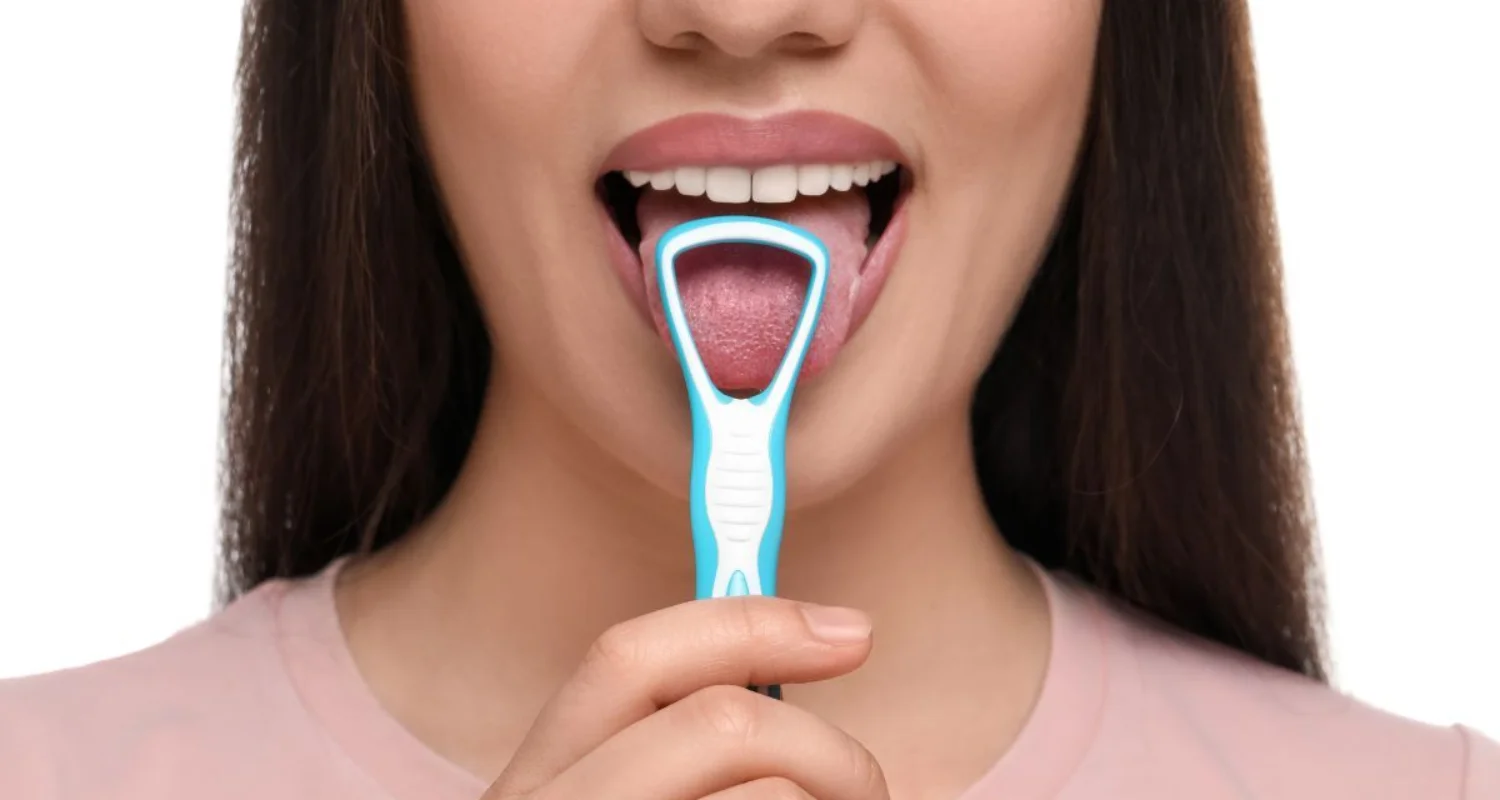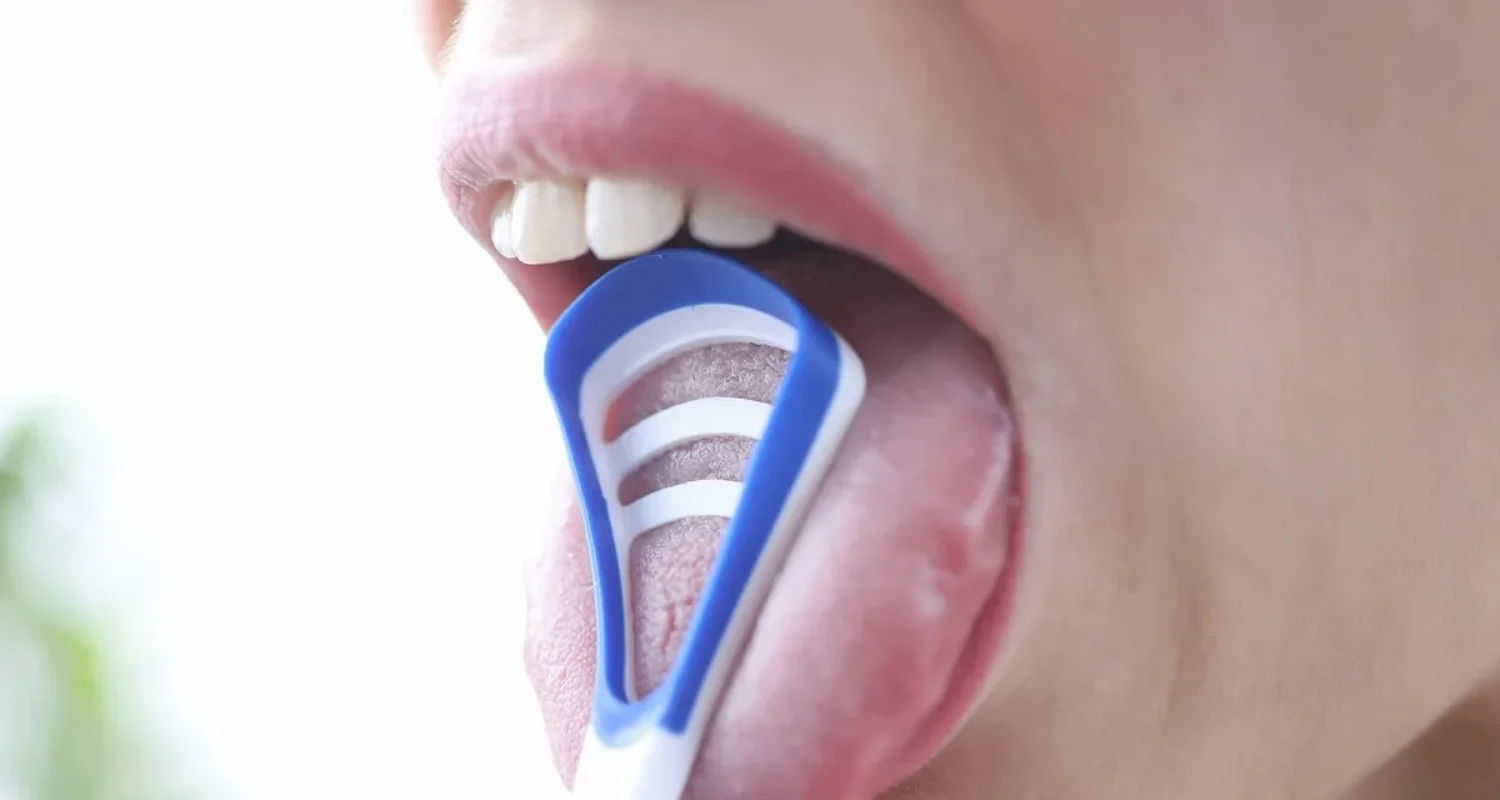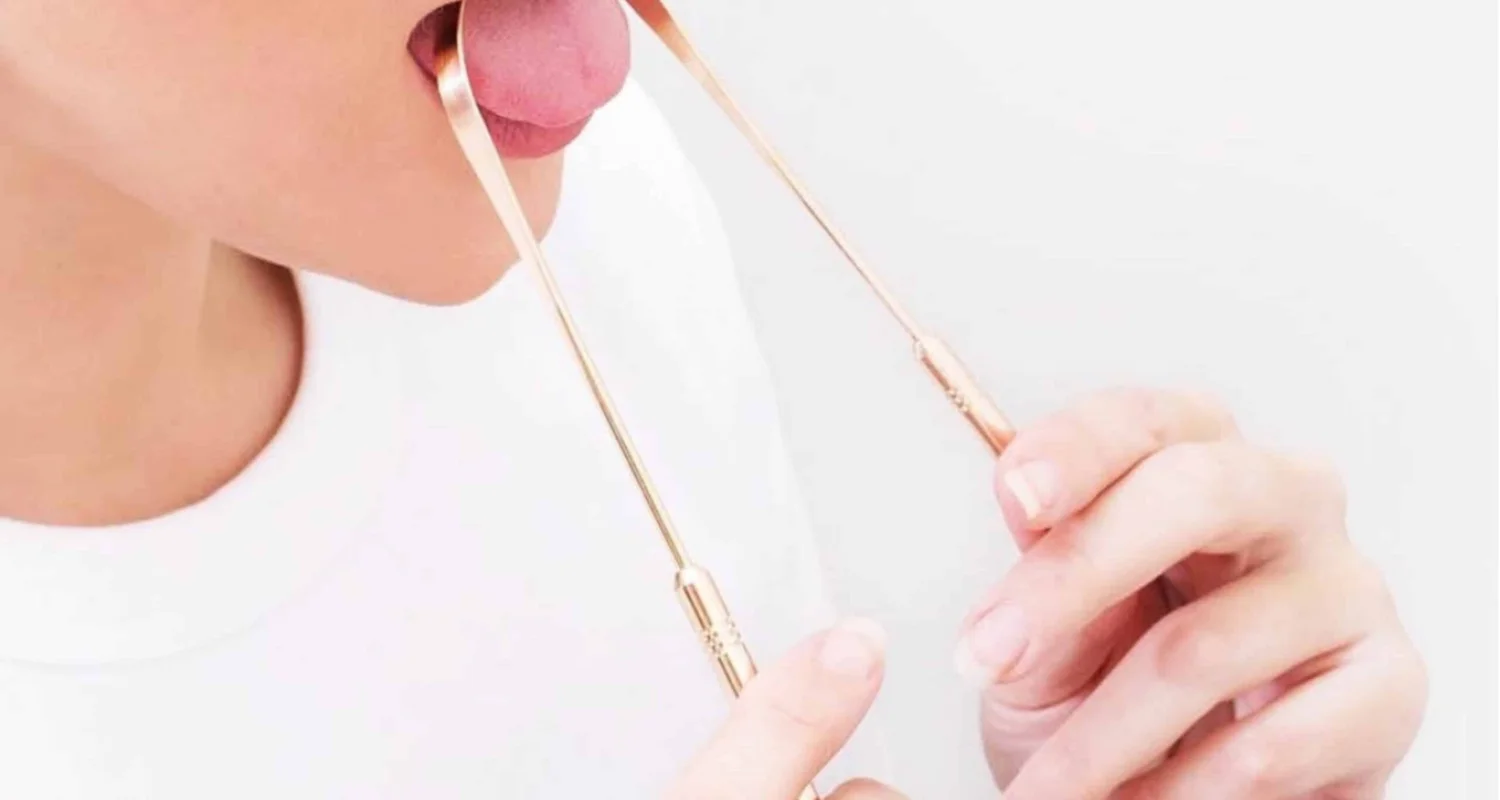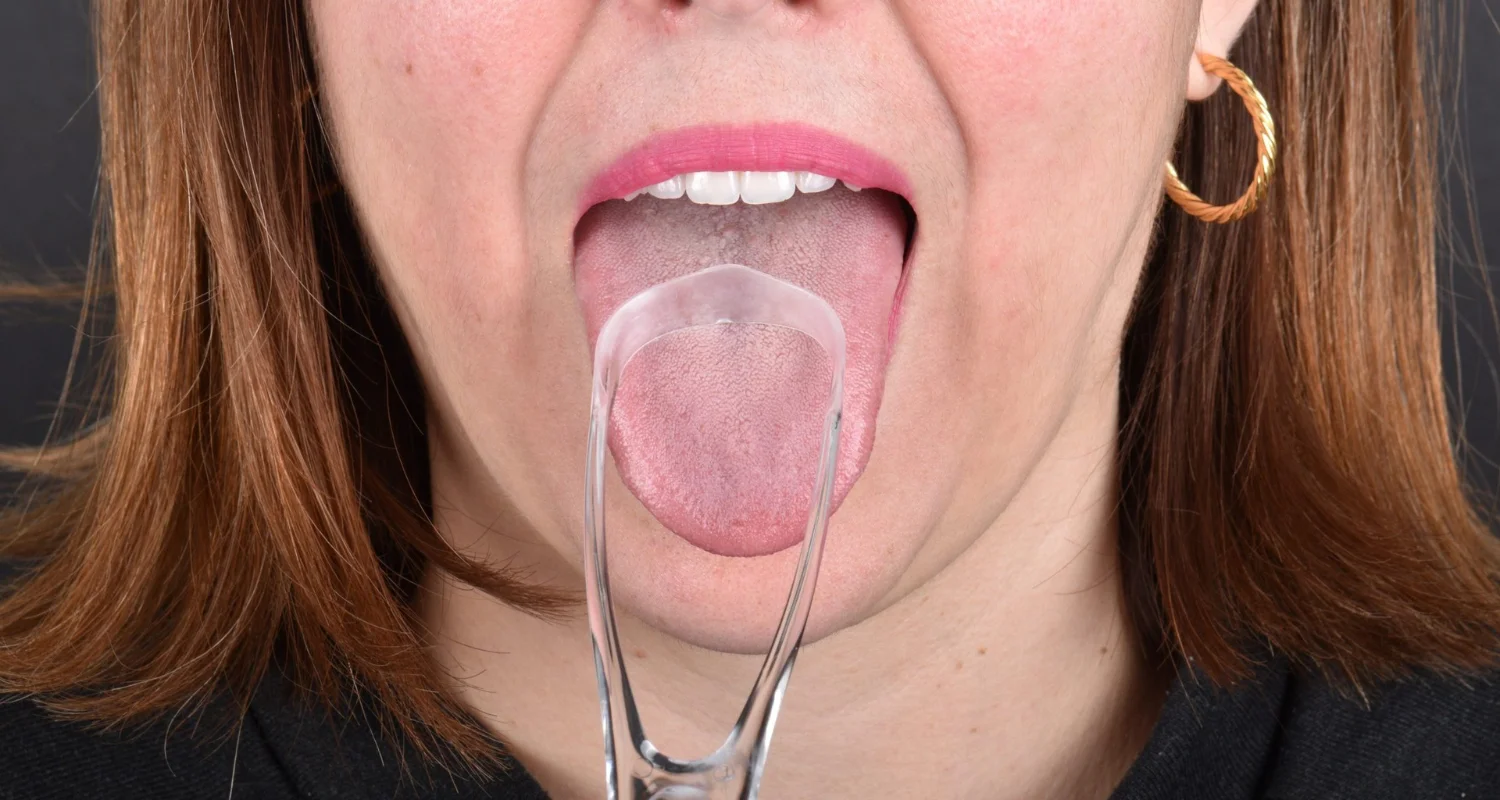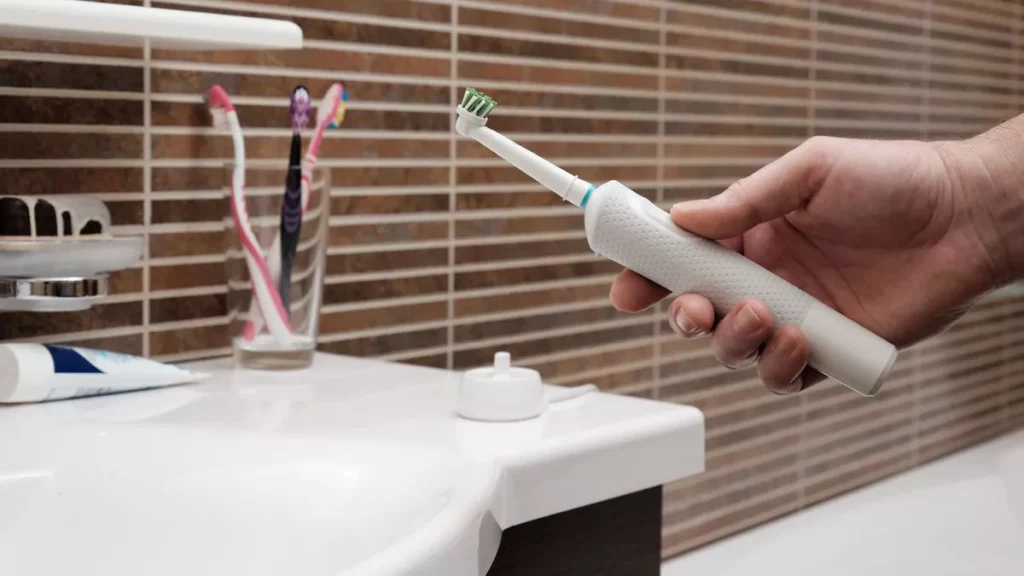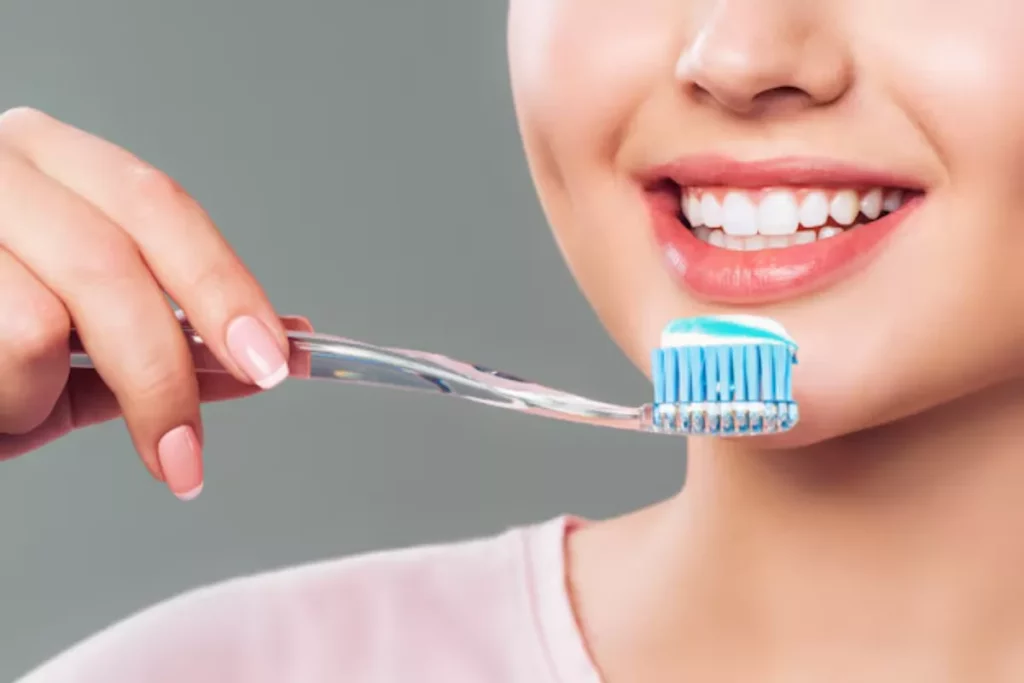Last Updated on: 18th December 2025, 11:21 am
Do you know how to use a tongue scrape effectively for a cleaner mouth? It’s time to discover the benefits of a tongue scraper and the best types for different ages.
No one can have healthy teeth and gums without regularly brushing and flossing. But you might also have to take care of your tongue if you’re aiming for next level cleanliness.
Tongue scraping, an age-old technique for cleansing the tongue, is an effective way to remove any bacterial buildup that can affect your breath, oral health, and taste. While scraping alone won’t substitute properly brushing one’s teeth, the supposed benefits have convinced many to include it in their nightly and morning routines.
Keep reading to find out what kinds of tongue scrapers are available, how to use one properly, and the benefits it provides for a cleaner mouth!
What is a Tongue Scraper?
Scaping of the tongue has been an innate tradition for several centuries throughout Europe, Africa, Arabia, India, and even South America, proving to be extremely effective in enhancing oral hygiene. To do this, you need a tongue scraper. Wondering what a tongue scraper is?
Well, a tongue scraper is a tool specifically designed to clean the surface of the tongue. Its primary purpose is to remove bacteria, food particles, and dead cells, helping to improve oral hygiene, reduce bad breath, and enhance the sense of taste.
How to Use a Tongue Scrape Properly
Correct tongue scraping requires the right tool: a tongue scraper, a toothbrush, or even an inverted spoon. Here is a simple step-by-step process of how to do it:
● Prepare: Stand in front of a mirror, open your mouth, and stick out your tongue as much as possible.
● Position the tool: Place the curved edge of your tongue scraper-or the head of your toothbrush or spoon-near the back of your tongue. If you’re just starting, place it in the center to avoid gagging. Try to go a little farther back as you become comfortable with what it feels like.
● Scrape: Lightly press and slowly pull the scraper from the back of your tongue toward the tip. Never scrape in a forward-to-backward motion, but always backward toward the front.
● Cleaning the scraper: After each pass, wipe the debris off the scraper with either a washcloth or a tissue.
● Repeat: Work in sections, repeating the scraping process until you’ve covered your entire tongue. Clean the scraper after each section. You can scrape each part of your tongue one to two times.
● Final rinse: Wash the tongue scraper with warm water and soap. If using a spoon, it can be placed in the dishwasher. Store your tool in a clean, dry area.
Scraping your tongue generally takes less than two minutes and can easily fit into your daily oral hygiene routine. For best results, scrape your tongue once or twice a day. Do this before brushing your teeth. Scrape regularly in the morning to remove nighttime buildup and throughout the day when you want to freshen up.
Types of Tongue Scrapers
A variety of tongue scrapers are available such as:
1. Brush tongue scrapers: Long-handled toothbrush-like tools with either ridges or short bristles at the head are the most common type of tongue scrapers. Since they are not big enough, you will need to pass them more than once over your tongue surface. You should replace a new set every three to four months if you use them often. If you want to see how they are, Buy brush tongue scrapers here!
2. Plastic tongue scrapers: They are thin plastic wires bent into a U-shape. Buy plastic tongue scrapers here!
3. Metal tongue scrapers: They are typically a thin, U-shaped metal wire. Sometimes, check the packaging or the manufacturer’s website for specifics, but generally speaking, they will last longer than plastic ones. You should be able to wipe your entire tongue in one pass if you place it carefully, but you might still want to make additional passes. Look at them by Buy metal tongue scrapers here!
Stainless steel or copper tongue scrapers will last forever, provided one cleans it regularly. Some love copper for its antimicrobial properties in the metal itself, which may be the best tongue scraper for white tongue, especially.
Choosing Between a Tongue Scraper Based on Your Age
It is important to note that when buying a tongue scraper, there are specific types for different age groups. Here is a simple guide on how to choose the best selection of tongue scrapers according to age:
Tongue scraper for children
For children, the soft and small scrapers work best, as their tongues may be very delicate. A child-friendly scraper that is non-slippery with an easy-to-handle handle is safe enough for them to make good oral hygiene habits. Check some models Buy tongue scraper for children here!
Tongue scraper for teens
They require a balance between comfort and effectiveness. Go for flexible plastic or silicone scrapers that will be comfortable yet effective.
Tongue scrapers for adults
Adult scrapers should be robust and effective; they can be made from stainless steel or copper because of the properties of these materials to clean up well and be bacteriostatic.
Tongue scrapers for seniors
For seniors, soft scrapers for sensitive tongues will do the job. A larger more ergonomic handle will promote grip and maneuverability for those individuals experiencing arthritis or reduced dexterity to make oral care comfortable and effective.
Benefits of a Tongue Scraper
There are several benefits of a tongue scraper, including:
● Better taste: Studies have found that scraping the tongue twice daily enhances taste perception through better tasting differentiation.
● Improved appearance of the tongue: Daily scraping removes the white coating from the build-up, leaving your tongue looking healthy.
● Combat bacteria: One study in 2005 showed that people who scraped every day, twice, had a significantly less amount of bacteria known to cause bad breath and dental decay.
● Improved general health: Since the number of bacteria is reduced, so is the risk of getting cavities, gum disease, and overall improved oral health.
● Eliminates bad breath: Research shows that scraping is more effective at eradicating the bacteria in the mouth that causes sour odors compared to conventional toothbrushes.
Potential Concerns and Precautions
There are possible tongue scraper side effects. The general problem one encounters with these tools is the gag reflex. Because of this, begin scraping your tongue from about the center, working your way toward the back as you become accustomed to it.
Ensure that the edges of your scraper are even and smooth, which will prevent cuts; inspect your scraper before using it. Use light pressure to avoid damaging your taste buds or harming your tongue. Begin with light pressure and increase gradually as needed.
It is important to see a dentist when you notice changes in the color or texture of your tongue. You should also see a dentist or doctor if you notice lumps, bumps, sores or inflammation on your tongue. If any of these symptoms are accompanied by pain or last longer than 14 days, you should see a doctor or dentist for a more detailed examination.
Adding a tongue scraper to your daily routine can make a huge difference in your oral health: it removes bacteria, improves taste, and reduces bad breath. Among the different types of tongue scrapers available, there is no best tongue scraper per se. By choosing the right scraper for your age and using it properly, you will ensure a clean, healthy mouth.
Frequently Asked Questions
What is the best tongue scraper material?
The best tongue scraper material depends on personal preference and need. Metal tongue scrapers, like stainless steel or copper, are popular for their durability and effective cleaning. They last longer and can be easily sanitized. Plastic tongue scrapers are gentler and more affordable, making them a good choice for beginners or those with sensitive tongues. Both materials can effectively remove bacteria and debris, so it comes down to what feels most comfortable for you.
Can I use a tongue scraper daily?
Yes, you can use a tongue scraper daily. In fact, regular tongue scraping, especially in the morning, can help keep your breath fresh and remove the bacteria that accumulate overnight. However, be gentle to avoid irritating your tongue. Scraping once a day is usually sufficient for maintaining good oral hygiene, but if your tongue feels particularly coated, you can scrape more frequently as long as there’s no discomfort.
How do I clean and maintain my tongue scraper?
To clean your tongue scraper, rinse it thoroughly with warm water after each use to remove any debris or bacteria. For metal scrapers, use a mild soap and water to clean it more thoroughly once a week, followed by drying with a towel to prevent rust. Plastic scrapers can be washed with soap and water; some are even dishwasher-safe. Regular cleaning ensures your scraper remains hygienic and effective.
Can a tongue scraper help with a white tongue?
Yes, a tongue scraper can help reduce the white tongue, which is often caused by a buildup of bacteria, dead cells, and food debris. By regularly scraping your tongue, you can remove this coating and improve both the appearance and health of your tongue. However, if the white coating persists or is accompanied by other symptoms, it’s best to consult a dentist or doctor to rule out any underlying conditions.
Is it safe to use a tongue scraper on a toothbrush?
Some toothbrushes come with a built-in tongue scraper on the back of the brush head. While these can be convenient, they may not be as effective as dedicated tongue scrapers. Tongue scrapers are specifically designed for better reach and to remove more bacteria. If you do use a toothbrush scraper, be gentle; if it feels uncomfortable or ineffective, consider switching to a separate scraper for better results.
Share
References
1. Rachel N. (April, 2021) 5 Reasons to Scrape Your Tongue and How to Do It. Healthline. https://www.healthline.com/health/dental-and-oral-health/tongue-scraping
2. Lauren B. (Aug, 2022) What Is Tongue Scraping? A Beginner’s Guide to This Oral Health Technique. Everydayhealth. https://www.everydayhealth.com/wellness/what-is-tongue-scraping/guide/
3. Khushbu G. (April, 2024) The Best Tongue Scrapers for Fresher Breath & Improved Health. NewMouth. https://www.newmouth.com/blog/tongue-scraper/
4. Jay K. (Sept, 2024) How to Scrape Your Tongue: Brushes, Scrapers & Spoons. Byte. https://www.byte.com/pages/quiz-assessment
5. Gordon, S., Khoo, E. DDS. (Jun, 2023).What Is Tongue Scraping and Should You Do It?. Health.
-
Nayibe Cubillos M. [Author]
Pharmaceutical Chemestry |Pharmaceutical Process Management | Pharmaceutical Care | Pharmaceutical Services Audit | Pharmaceutical Services Process Consulting | Content Project Manager | SEO Knowledge | Content Writer | Leadership | Scrum Master
View all posts
A healthcare writer with a solid background in pharmaceutical chemistry and a thorough understanding of Colombian regulatory processes and comprehensive sector management, she has significant experience coordinating and leading multidisciplina...


